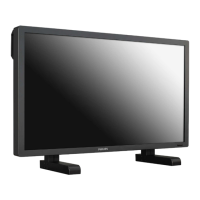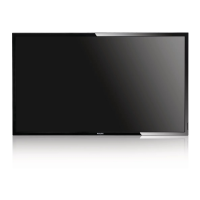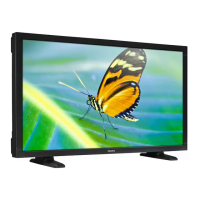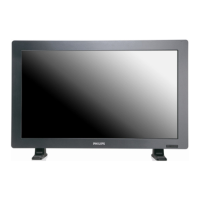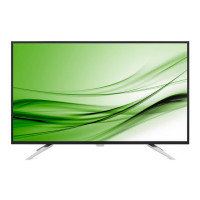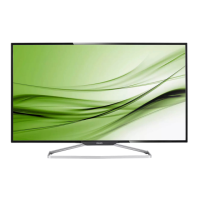Do you have a question about the Philips BDL4771V and is the answer not in the manual?
Covers essential safety guidelines for operating and maintaining the display, including warnings and best practices.
Lists standards and directives the product complies with for the European market.
Details FCC compliance for Class B digital devices, including interference guidelines and user actions.
States the product's compliance with FCC Rules, outlining operating conditions for interference.
Provides specific electrical safety requirements and certifications for Poland.
Addresses the product's compliance with EMF standards and the company's commitment to safety.
Crucial safety warning regarding the mandatory earthing of the appliance for UK users.
Instructions on correctly wiring and connecting the power plug for UK mains.
Guidance on proper placement and ventilation for optimal display operation in Nordic regions.
Information on recycling and proper disposal of the display according to local regulations.
Details on responsible disposal of electronic waste in the EU, following the WEEE directive.
Explains recycling of display components and disposal of lamps containing mercury.
Provides detailed instructions for safely cleaning the display's front panel and cabinet.
Offers solutions for common display issues such as no picture, distorted images, or sound problems.
Steps for safely removing the display and accessories from its packaging.
Lists all items included in the display package for verification.
Important considerations for installing the display safely and optimally, including ventilation and environment.
Guidance on wall mounting the display, including VESA compatibility and screw requirements.
Identifies and describes the various connectors and indicators on the rear of the display.
Details all available input and output ports for connecting external devices.
Explains the functions and operation of the display's remote control.
Instructions on how to use the cable retainer for organizing connections.
Describes how to use the switch cover to prevent accidental power changes.
Guides on connecting DVD, VCR, and VCD players using component video and audio inputs.
Provides instructions for connecting a PC via VGA, DVI, HDMI, and DisplayPort inputs.
Details on connecting external speakers and audio devices to the display.
Instructions for daisy-chaining multiple displays for video wall configurations.
Explains how to navigate and use the On-Screen Display (OSD) menu using the remote control or buttons.
Details image adjustment settings like brightness, contrast, sharpness, and color.
Covers settings related to picture positioning, clock, zoom mode, and screen reset.
Explains audio settings such as speaker output, volume, balance, treble, bass, and audio source.
Covers settings for power management, language, panel saving, and network configuration.
Details OSD display settings, orientation, sleep timer, and monitor information.
Provides advanced image processing settings like input resolution, gamma, scan mode, and IR control.
Instructions for updating the display's firmware using a USB flash drive.
Lists supported VGA resolutions, refresh rates, pixel rates, and aspect ratios.
Details supported SDTV resolutions, including NTSC and PAL standards.
Specifies supported HDTV resolutions like 720p, 1080i, and 1080p.
Defines pixels and sub-pixels as elements of an image on the display.
Explains categories of pixel defects and defines what constitutes a defective 'dot'.
Describes bright pixel or sub-pixel defects that are always lit.
Describes dark pixel or sub-pixel defects that are always off.
Outlines tolerances for the proximity of same-type pixel defects to ensure quality.
Lists acceptable levels for bright and dark pixel defects to qualify for warranty repair.
Explains Mura (unevenness) as an industry phenomenon affecting LCD panels and its causes.



